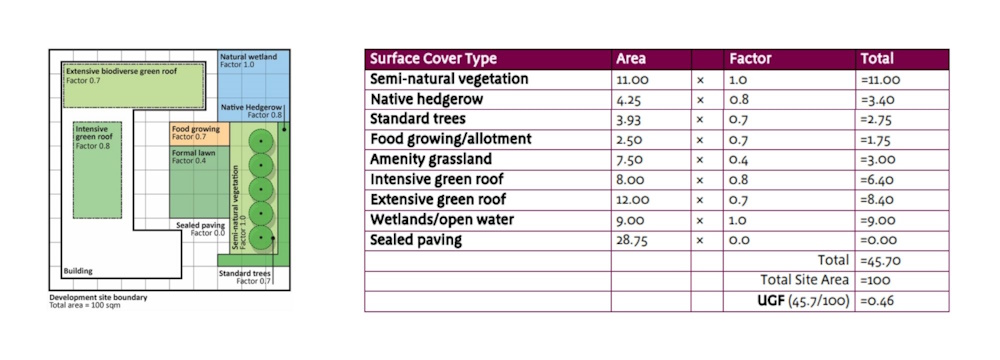The Urban Greening Factor Standard sets a target score for the proportion of green infrastructure in an area. It can be introduced through planning policies, and can be applied to an entire local planning area or to specific locations.
How does it work?
The Urban Greening Factor score provides a simple means to measure and compare green infrastructure design proposals and demonstrate whether a scheme achieves the target score set by planning policy.
The score is calculated using a set of weighted green infrastructure surface cover types that include natural and semi-natural vegetation, street trees, hedgerows, sustainable drainage features, green roofs and walls. The area of each surface cover type is multiplied by a weighting, and the sum of these figures is divided by the total area, using the Excel spreadsheet provided.

The Urban Greening Factor can be used alongside Biodiversity Net Gain. Where the baseline biodiversity is low, the Urban Greening Factor can ensure development still promotes more nature-rich environments that increase the functionality, sustainability, and climate resilience, particularly in dense urban areas.
What is the standard?
Area-wide standard: Urban greening is at least 40% average green cover in urban residential neighbourhoods where they do not already meet that standard. There is no net loss of green cover in urban neighbourhoods.
Major development standard: Major development meets National Urban Greening Factors of at least 0.3 for commercial development, 0.4 for residential development, (and, where appropriate, 0.5 for residential greenfield development).